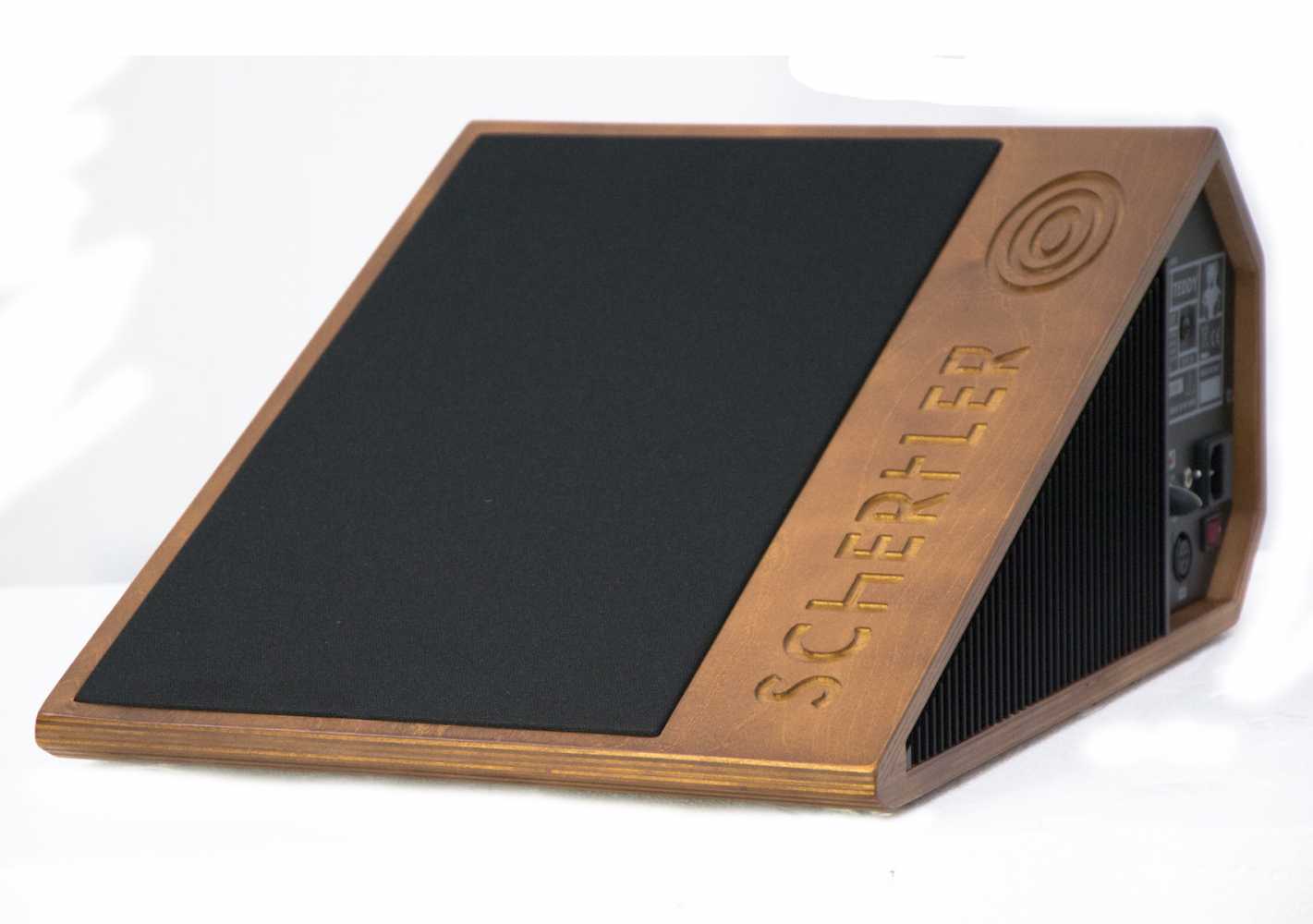Schertler releases Roy and Teddy
- Details

Roy is the new “King” of Schertler’s next generation acoustic amplifier series. Equipped with a 1” tweeter and two 8” woofers, the 400W, top-of-the-range, 7-channel combo amp forms a powerful yet portable stand-alone stage or studio amplification system for soloists and/or small groups.
Roy includes four input channels with various microphone / instrument combinations, inserts (as on a professional mixer), 3-band EQ and phantom power; an additional unbalanced instrument input channel; a stereo input channel for playback devices and an FX return / additional input channel. The amplifier’s Master section features both a digital reverb and a new digital Multi-Effect (on a separate bus), as well as DI/Line/Aux Outputs and a headphone preamp for monitoring.
Like all Schertler amplifiers, Roy is equipped with a high-voltage Class-A preamp and has no integrated circuits and no negative feedback (NFB) to guarantee best possible sound reproduction. The amp is available with a wood or anthracite finish.
Teddy, Schertler’s new 200W compact stage monitor, has been specifically developed for professional theatre and concert sound applications. Equipped with an 8” coaxial woofer and 1” compression driver for constant sound directivity, the wedge-shaped monitor has a “low profile” design that makes it ideal for edge-of-stage use without impeding audience views.
The monitor’s specific inclination angle enables it to be effectively used for both standing and seated performances. For more extensive stage coverage, several units can be chained together using balanced (XLR) input and output connections - all linked to the same signal path.
(Jim Evans)
















